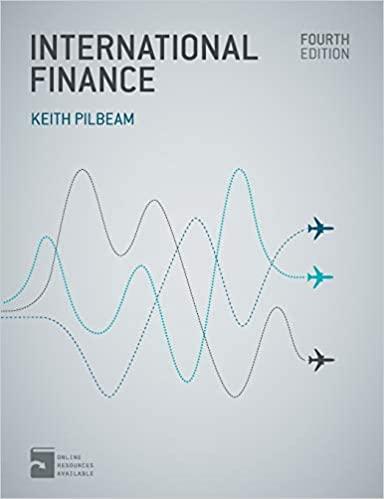Question
MINICASE The Swiss Sovereign Wealth Corp. The Swiss Sovereign Wealth Corp. (SSWC) is in the last stage of its growth phase. While the variability in
MINICASE The Swiss Sovereign Wealth Corp. The Swiss Sovereign Wealth Corp. (SSWC) is in the last stage of its growth phase. While the variability in the companys earnings has decreased significantly, its revenue growth rates, though still impressive, are beginning to slow down. As the company is turning into a cash cow, the question arises of what to do with the free cash flow it generates. Since an increasing portion of this cash cannot be reinvested at rates higher than the companys cost of capital, a necessary condition to increase firm value, the management has decided to pay an annual dividend for the first time in the companys history, starting next year with CHF 1.60. Having noticed the dividend announcement in the local business newspaper, you wonder if buying shares of SSWC would be a lucrative idea. After all, you are a total return investor, that is, you favor a mix of capital gains and dividend income. From your investment experience, you known that it often takes a few years before a newly dividend paying company establishes a somewhat constant dividend policy. Based on your analysis of the dividend paying behavior of companies that in the past were in a financial position similar to SSWC, you estimate the next dividends to be CHF 2.10, CHF 2.50, and CHF 2.85 for years two, three, and four, respectively. For the years to follow, you anticipate an annual dividend growth rate that reflects the industry average of 4 percent. Upon the dividend announcement, SWC shares went up by almost 1.25 percent and are currently trading at CHF 46.85. Given a yield of 3.25 percent on Swiss government bonds, you have calculated the markets required risk premium for SSWCs industry rivals to be 550 basis points (5.5 percent) on average. QUESTIONS 1. Applying the Dividend Discount Model (DDM), determine SSWCs intrinsic value per share. Should you buy the shares? 2. Four years later, the company has implemented a constant dividend policy based on earnings per share of CHF13.5 and a dividend payout ratio of 0.2. SWC just paid a dividend of CHF2.70 (instead of 2.85 as you had originally projected). a. Compute the share price using the constant dividend model. b. Assume you buy the shares at the price computed in 2a, and sell it one year later, having received the dividend at the end of your investment period, what would be your total return? c. The market seems to be quite optimistic about the prospects of the SSWC. Compute the dividend growth rate that is implied in the current share price of CHF 62.44 (which is higher than your estimate in 2a). d. Many companies increase the dividend payout ratio (DPO) once they have entered the maturity phase. Looking ahead, you wonder what SSWCs shares would be worth if the company increased its dividend payout ratio (DPO) next year. Recompute SSWCs share price (P5) based on a 25 percent and 30 percent DPO. Assume an annual EPS growth of 4 percent. 3. When relying on valuation models such as the DDM, it is important to understand how sensitive the models share price estimate is to changes in the input variables. Determine the percentage change in the share price estimate for P5 of CHF 61.52 to an increase in the required rate of return by 100 bp to 9.75 percent, a decrease in the dividend growth rate by 100 bp to 3 percent, a decrease in DPO by 100 bp to 19 percent, and a decrease in EPS growth by 100 bp to 3 percent. Compute the resulting changes in the share price in isolation, i.e., change one variable at a time.
Step by Step Solution
There are 3 Steps involved in it
Step: 1

Get Instant Access to Expert-Tailored Solutions
See step-by-step solutions with expert insights and AI powered tools for academic success
Step: 2

Step: 3

Ace Your Homework with AI
Get the answers you need in no time with our AI-driven, step-by-step assistance
Get Started


